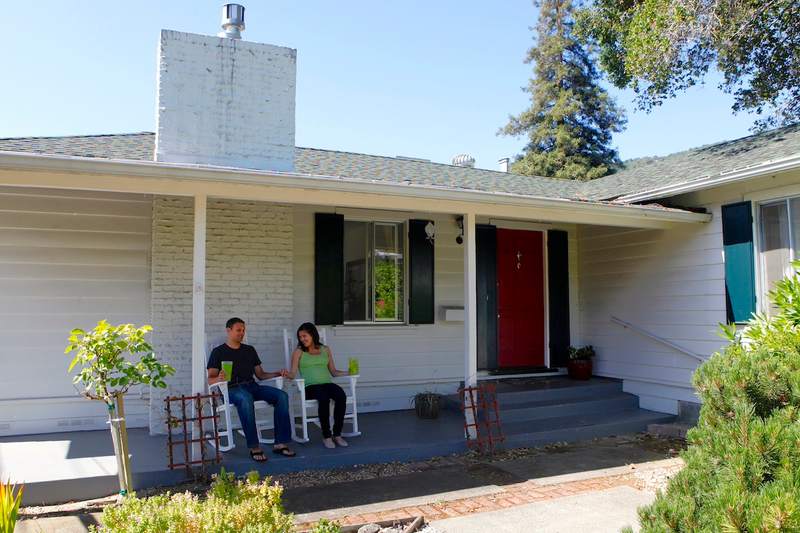FHA loans have flexible qualification standards and a low down payment requirement. This makes them a good option for many first-time and repeat home buyers even if you have a few dings on your credit. One way to further improve your chances of qualifying is by adding an individual known as a non-occupant or non-occupying co-borrower.
Let’s walk through FHA non-occupant co-borrower guidelines and the benefits of having a non-occupant co-borrower when applying for an FHA loan.
Find A Mortgage Today and Lock In Your Rate!
Get matched with a lender that will work for your financial situation.
Does The FHA Allow Non-Occupant Co-Borrowers?
The FHA allows non-occupying co-borrowers to make the qualification process easier for first-time home buyers and others applying for an FHA loan. The lender will consider both the borrower’s and non-occupying co-borrower’s financial and residential requirements when evaluating the mortgage application.
A co-borrower – whether they be a non-occupying co-borrower or a more traditional co-borrower who lives on the property – can often help those with a fairly low credit score or somewhat high debt-to-income ratio (DTI) qualify for an FHA loan. This makes co-borrowers attractive to younger home buyers and those looking to rebuild their credit. The ability to apply with a non-occupant co-borrower extends this flexibility even more by allowing you to qualify with the income of a co-borrower who won’t be living in the home.
How A Co-Borrower Works For An FHA Loan
The main benefit of having a co-borrower on an FHA loan is that you can use their income to help you qualify. When a lender is underwriting your mortgage loan, you’ll have a better chance to qualify if your income is higher. That’s because a higher income helps improve your DTI. We’ll delve deeper into DTI requirements for FHA loans below.
If you’re thinking of becoming a co-borrower, be aware that you’ll be equally responsible for the loan regardless of whether you live in the home. If the primary occupying client fails to make payments on the property, you can be held legally and financially responsible for the loan. This means that if the main borrower defaults, it can impact your credit and have other negative effects.
See What You Qualify For
Buy A Home
Discover mortgage options that fit your unique financial needs.

Refinance
Refinance your mortgage to have more money for what matters.
Tap Into Equity
Use your home’s equity and unlock cash to achieve your goals.
FHA Guidelines For Non-Occupying Co-Borrowers
Anyone who qualifies for a mortgage based on a very short list of legal requirements can be a non-occupying co-borrower. However, having that co-borrower be a family member has its advantages.
If you’re using a co-borrower in a transaction with a non-relative, the FHA requires that you make a 25% down payment. For a refinance, you’ll need to have 25% equity in the property. If you’re borrowing in conjunction with a family member, though, you can make the standard FHA minimum down payment of 3.5% as long as your credit score is 580 or higher.
For the purposes of your mortgage eligibility, the FHA defines a family member as one of the following:
- A child (includes step-children, foster children and those legally adopted)
- A parent (includes step-parents and foster parents)
- Siblings (includes step-siblings)
- Grandparents (includes step-grandparents and foster grandparents)
- An aunt or uncle
- In-laws (a son, daughter, father, mother, brother or sister in-law)
One exception is a scenario where a parent sells a home to their child and also signs as a co-borrower. This is called a non-arm’s length transaction, and the minimum down payment is 25%.
Finally, the 3.5% down payment requirement when the non-occupying co-borrower is a family member only applies to single-unit homes. If your property has two to four units, the minimum down payment is 25%.
Requirements For FHA Non-Occupying Co-Borrowers
Being a non-occupying co-borrower involves meeting a couple of basic requirements. These include being a U.S. citizen and having a primary residence in the U.S. Additionally, you’ll have to sign the mortgage note and be jointly responsible for the loan. Beyond that, you must meet several requirements related to your financial profile. They include the following:
- Credit score: Under FHA guidelines, you can get a loan with a median FICO® Score as low as 500. However, many lenders, including Rocket Mortgage®, require both borrowers to have a minimum 580 median qualifying score. If you have a score of 620 or higher, DTI requirements are more flexible.
- DTI: Depending on your credit score, DTI could matter in a couple of ways. If you have a score of 580 – 620, your mortgage payment can’t be more than 38% of your pretax income. You’ll also need total debt payments (mortgage payment and all other debt) that are no higher than 45%. If both borrowers have a score of 620 or better, you may be approved with DTI up to 57% (or maybe DTI above 50% depending on other qualifying factors).
- Down payment: If you have a credit score in the 500 to 579 range, you can get an FHA loan with 10% down. With a credit score of 580 or higher, you can make a down payment of 3.5%. If your non-occupant co-borrower isn’t a family member or if one of the exceptions noted previously applies, the minimum down payment is 25%.
- LTV: You’ll also see some lenders refer to your down payment requirements as your loan-to-value ratio (LTV). You can do the conversion between LTV and minimum down payment or equity amount by subtracting from 100. If a lender tells you they can do a maximum LTV of 96.5%, that’s 3.5% down.
Find A Mortgage Today and Lock In Your Rate!
Get matched with a lender that will work for your financial situation.
Co-Signer Vs. Co-Borrower
With home loans, you’ll find a few similarities and differences between a co-signer and a co-borrower. Both a co-signer and a co-borrower can help you qualify for a mortgage, but their rights and responsibilities are a bit different.
Co-signers don’t hold any ownership in the property – though they’re still financially responsible. However, they go through the same review process as a co-borrower to help you qualify for a mortgage. A co-signer will also need to sign all documents, except the security instrument, that are associated with the mortgage. Co-borrowers will need to sign all documentation, including the mortgage, title and security instrument.
While the review process for a co-borrower is mostly the same as a co-signer, co-borrowers typically have ownership rights in addition to financial responsibility. However, non-occupying co-borrowers may or may not have an ownership interest in the property, according to the U.S. Department of Housing and Urban Development website.
The Benefits Of Using A Non-Occupant Co-Borrower
The biggest benefit to applying with a non-occupant co-borrower is that you can use their income to help lower your DTI, meaning you can qualify for a bigger mortgage payment. This in turn strengthens your budget so you can afford more home or qualify to refinance.
There’s a misconception that having a co-borrower will help you if you have some blemishes on your credit report. This isn’t the case with an FHA loan. That’s because your interest rate is based on the lowest median score of all applicants.
The Bottom Line
Applying with a non-occupant co-borrower can allow you to add to your budget and qualify for a larger mortgage based on the extra income. Both borrowers must meet the credit score requirement and are equally responsible for the loan.
Having a family member as a non-occupant co-borrower can have a big impact on your down payment. If your non-occupant co-borrower is a family member, the required down payment is only 3.5% as long as your credit score is at least 580. Otherwise, you’ll need to put 25% down to buy or refinance.
Find A Mortgage Today and Lock In Your Rate!
Get matched with a lender that will work for your financial situation.

Miranda Crace
Miranda Crace is a Staff Writer for Rocket Companies, bringing a wealth of knowledge about mortgages, personal finance, real estate and personal loans for over 10 years. Miranda is dedicated to advancing financial literacy and empowering individuals to achieve their financial and homeownership goals. She graduated from Wayne State University, where she studied PR writing, film production and film editing. In her spare time, Miranda enjoys traveling, actively engages in the entrepreneurial community, and savors a perfectly brewed cup of coffee.












